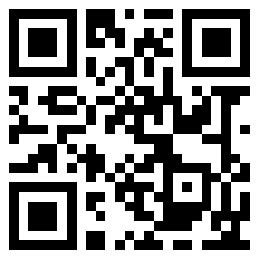The Radiocarbon Dating of Prehistoric American Sites
Because all living things contain carbon, artifacts and organic remains from archaeological sites can often be dated by comparing the proportion of carbon-14 (radiocarbon) remaining in them(or in the location where they were found) to the proportion of non-radiocarbon (carbon-12 and carbon-13) in them, a method called radiocarbon dating. This technique is based on the fact that the amount of carbon-12 and carbon-13 stays constant in organisms, while the amount of carbon-14 declines at a steady rate once the organism dies. When an animal or plant dies, it stops exchanging gases with the atmosphere and its carbon-14 begins to decrease. Thus the amount of carbon-14 remaining indicates how long ago an organism died. Radiocarbon is the preferred method for dating the sites of the earliest Americans. Its range reaches back 50,000 years, which is the period of interest, and its reliability is well attested since variations in atmospheric carbon levels over time have been well studied and can readily be adjusted for in age calculations. Moreover, the technique can be applied to any material that incorporates radiocarbon, such as bone, wood, charcoal (burned wood), and even soils, the last by virtue of the organic acids that seep into them.
Yet not all of these materials, including charcoal and bone from which radiocarbon ages are most often obtained, give results that are equally reliable (if we run the sample multiple times, will we get the same result?) or valid (is the result correct?). An example of this situation occurred with the Folsom site, a Paleo-Indian culture of Central and North America dated to about 10,500-8,000 years ago, which is distinguished by the remains of bison, the site being a location for killing and processing these animals, possibly using stone points. In the 1990s, the bison kill was thought to have dated to 10,890 B.P., based on radiocarbon ages of charcoal found with the bones. Yet the subsequent radiocarbon dating of the bison bones themselves yielded an average age 400 years younger: 10,490 B.P. Why the discrepancy?
Charcoal has the virtue of being relatively impervious to contamination and thus normally yields a reliable age. But the age may not be valid since the charcoal may not have been formed at the same time that, for example, the bison were killed at the Folsom site. If the charcoal came from, say, a lightning-strike forest fire, it will have no bearing on the age of the kill. Even if the charcoal was from wood that stoked the fires over which the bison meat was cooked, it could still overestimate the age of the kill site. If the charcoal was from wood from the oldest part of a long-lived tree, it could be decades or even centuries older than other parts of the same tree and thus older than the kill site.
Conversely, radiocarbon dating of animal bones can more precisely pin down the age of a site, since animals live shorter lives than trees, though, of course, only bones present as a result of human activity (which is certainly the case of the Folsom bison) are of interest to archaeologists. But dating bone itself can be challenging, since it is made of multiple constituents, some of which are highly susceptible to contamination. The inorganic portion, for example, readily absorbs ancient carbon via groundwater or other contaminants. Before that was realized, multiple radiocarbon ages on the same skeleton often gave wildly divergent results-in one case, for example, the oldest and youngest radiocarbon ages on the same mammoth were nearly 3,000 years apart. In the 1980s, after laboratory advances enabled the extraction of protein and individual amino acids from organic bone collagen, substances less susceptible to contamination, it became possible to derive ages from bone that were more reliable. Hence, the conclusion that the bone amino acid obtained from the Folsom bison better estimated when that kill occurred.
But the handicap of radiocarbon dating, which will be felt if the first Americans prove to be far older than supposed, is that it does not provide reliable ages for any samples that might prove to be significantly more than 50,000 years old. For that, there are a number of other dating methods that can go beyond radiocarbon’s limits.
1
Because all living things contain carbon, artifacts and organic remains from archaeological sites can often be dated by comparing the proportion of carbon-14 (radiocarbon) remaining in them(or in the location where they were found) to the proportion of non-radiocarbon (carbon-12 and carbon-13) in them, a method called radiocarbon dating. This technique is based on the fact that the amount of carbon-12 and carbon-13 stays constant in organisms, while the amount of carbon-14 declines at a steady rate once the organism dies. When an animal or plant dies, it stops exchanging gases with the atmosphere and its carbon-14 begins to decrease. Thus the amount of carbon-14 remaining indicates how long ago an organism died. Radiocarbon is the preferred method for dating the sites of the earliest Americans. Its range reaches back 50,000 years, which is the period of interest, and its reliability is well attested since variations in atmospheric carbon levels over time have been well studied and can readily be adjusted for in age calculations. Moreover, the technique can be applied to any material that incorporates radiocarbon, such as bone, wood, charcoal (burned wood), and even soils, the last by virtue of the organic acids that seep into them.
Which of the following can be inferred from paragraph 1 about the amount of carbon-14 in organisms?
AIt is higher in living organisms than the amount of either carbon-12 or carbon-13.
BIt is higher when organisms are alive than it is long after they have died.
CIt declines more quickly in living organisms than in dead ones.
DIt is less variable in organisms than the amounts of carbon-12 and carbon-13 are.
2
Because all living things contain carbon, artifacts and organic remains from archaeological sites can often be dated by comparing the proportion of carbon-14 (radiocarbon) remaining in them(or in the location where they were found) to the proportion of non-radiocarbon (carbon-12 and carbon-13) in them, a method called radiocarbon dating. This technique is based on the fact that the amount of carbon-12 and carbon-13 stays constant in organisms, while the amount of carbon-14 declines at a steady rate once the organism dies. When an animal or plant dies, it stops exchanging gases with the atmosphere and its carbon-14 begins to decrease. Thus the amount of carbon-14 remaining indicates how long ago an organism died. Radiocarbon is the preferred method for dating the sites of the earliest Americans. Its range reaches back 50,000 years, which is the period of interest, and its reliability is well attested since variations in atmospheric carbon levels over time have been well studied and can readily be adjusted for in age calculations. Moreover, the technique can be applied to any material that incorporates radiocarbon, such as bone, wood, charcoal (burned wood), and even soils, the last by virtue of the organic acids that seep into them.
According to paragraph 1,radiocarbon dating is now the preferred method for determining the age of ancient biological specimens for all of the following reasons EXCEPT:
AIt can be used to date specimens that are tens of thousands of years old.
BIt is considered scientifically reliable.
CIt can be used to date all materials that have radiocarbon.
DIt can be used to determine whether organic acids have seeped into materials being tested.
3
Yet not all of these materials, including charcoal and bone from which radiocarbon ages are most often obtained, give results that are equally reliable (if we run the sample multiple times, will we get the same result?) or valid (is the result correct?). An example of this situation occurred with the Folsom site, a Paleo-Indian culture of Central and North America dated to about 10,500-8,000 years ago, which is distinguished by the remains of bison, the site being a location for killing and processing these animals, possibly using stone points. In the 1990s, the bison kill was thought to have dated to 10,890 B.P., based on radiocarbon ages of charcoal found with the bones. Yet the subsequent radiocarbon dating of the bison bones themselves yielded an average age 400 years younger: 10,490 B.P. Why the discrepancy?
The phrase “distinguished by” in the passage is closest in meaning to
Asurrounded by
Bstudied for
Ccovered with
Dnoted for
4
Yet not all of these materials, including charcoal and bone from which radiocarbon ages are most often obtained, give results that are equally reliable (if we run the sample multiple times, will we get the same result?) or valid (is the result correct?). An example of this situation occurred with the Folsom site, a Paleo-Indian culture of Central and North America dated to about 10,500-8,000 years ago, which is distinguished by the remains of bison, the site being a location for killing and processing these animals, possibly using stone points. In the 1990s, the bison kill was thought to have dated to 10,890 B.P., based on radiocarbon ages of charcoal found with the bones. Yet the subsequent radiocarbon dating of the bison bones themselves yielded an average age 400 years younger: 10,490 B.P. Why the discrepancy?
According to paragraph 2, the radiocarbon dating of charcoal suggested which of the following about the Folsom kill site?
APaleo-Indians used the site partly as a place for making stone points.
BPaleo-Indians were using the site earlier than radiocarbon dating based on bison bones indicated.
CPaleo-Indians were using the site near the end of the history of the Folsom culture.
DPaleo-Indians used the site for about 400 years.
5
Charcoal has the virtue of being relatively impervious to contamination and thus normally yields a reliable age. But the age may not be valid since the charcoal may not have been formed at the same time that, for example, the bison were killed at the Folsom site. If the charcoal came from, say, a lightning-strike forest fire, it will have no bearing on the age of the kill. Even if the charcoal was from wood that stoked the fires over which the bison meat was cooked, it could still overestimate the age of the kill site. If the charcoal was from wood from the oldest part of a long-lived tree, it could be decades or even centuries older than other parts of the same tree and thus older than the kill site.
The word “relatively” in the passage is closest in meaning to
Aparticularly
Bfairly
Csurprisingly
Dnaturally
6
Charcoal has the virtue of being relatively impervious to contamination and thus normally yields a reliable age. But the age may not be valid since the charcoal may not have been formed at the same time that, for example, the bison were killed at the Folsom site. If the charcoal came from, say, a lightning-strike forest fire, it will have no bearing on the age of the kill. Even if the charcoal was from wood that stoked the fires over which the bison meat was cooked, it could still overestimate the age of the kill site. If the charcoal was from wood from the oldest part of a long-lived tree, it could be decades or even centuries older than other parts of the same tree and thus older than the kill site.
In paragraph 3, why does the author discuss charcoal from different sources?
ATo present possible reasons why the charcoal tested may provide a wrong date for the Folsom kill
BTo support the claim that charcoal is relatively impervious to contamination
CTo emphasize the reliability of charcoal in radiocarbon dating
DTo explain why scientists used charcoal to help determine the age of the Folsom kill
7
Conversely, radiocarbon dating of animal bones can more precisely pin down the age of a site, since animals live shorter lives than trees, though, of course, only bones present as a result of human activity (which is certainly the case of the Folsom bison) are of interest to archaeologists. But dating bone itself can be challenging, since it is made of multiple constituents, some of which are highly susceptible to contamination. The inorganic portion, for example, readily absorbs ancient carbon via groundwater or other contaminants. Before that was realized, multiple radiocarbon ages on the same skeleton often gave wildly divergent results-in one case, for example, the oldest and youngest radiocarbon ages on the same mammoth were nearly 3,000 years apart. In the 1980s, after laboratory advances enabled the extraction of protein and individual amino acids from organic bone collagen, substances less susceptible to contamination, it became possible to derive ages from bone that were more reliable. Hence, the conclusion that the bone amino acid obtained from the Folsom bison better estimated when that kill occurred.
According to paragraph 4, why has radiocarbon dating of bone been inaccurate at times?
ASome parts of bones can be easily contaminated.
BSome parts of bones do not absorb radiocarbons.
CHuman activity can affect the substances in bones.
DSome bones came from animals that had no contact with humans.
8
But the handicap of radiocarbon dating, which will be felt if the first Americans prove to be far older than supposed, is that it does not provide reliable ages for any samples that might prove to be significantly more than 50,000 years old. For that, there are a number of other dating methods that can go beyond radiocarbon’s limits.
Which of the sentences below best expresses the essential information in the highlighted sentence in the passage? Incorrect choices change the meaning in important ways or leave out essential information.
AThe handicap of radiocarbon dating is that it cannot be used to determine whether samples of the first Americans are older than supposed.
BRadiocarbon dating is not reliable for samples significantly older than 50,000 years.
CRadiocarbon dating of samples more than 50,000 years old has been proved inaccurate.
DThe handicap of radiocarbon dating is that there is not a significant number of samples more than 50,000 years old.
9
Conversely, radiocarbon dating of animal bones can more precisely pin down the age of a site, since animals live shorter lives than trees, though, of course, only bones present as a result of human activity (which is certainly the case of the Folsom bison) are of interest to archaeologists. But dating bone itself can be challenging, since it is made of multiple constituents, some of which are highly susceptible to contamination. [■]The inorganic portion, for example, readily absorbs ancient carbon via groundwater or other contaminants. [■]Before that was realized, multiple radiocarbon ages on the same skeleton often gave wildly divergent results-in one case, for example, the oldest and youngest radiocarbon ages on the same mammoth were nearly 3,000 years apart.[■] In the 1980s, after laboratory advances enabled the extraction of protein and individual amino acids from organic bone collagen, substances less susceptible to contamination, it became possible to derive ages from bone that were more reliable. [■]Hence, the conclusion that the bone amino acid obtained from the Folsom bison better estimated when that kill occurred.
Look at the four squaresthat indicate where the following sentence could be added to the passage
Eventually, a way was found to obtain consistently reliable findings.
Where would the sentence best fit?Click on a square sentence to the passage.
10
Radiocarbon dating is commonly used to determine the age of prehistoric Native American sites.
ARadiocarbon dating can date specimens as old as 50,000 B.P., but it does not always provide equally reliable and valid results, as observed at the Folsom site.
BWhile charcoal is often useful for radiocarbon dating,the charcoal found at the Folsom site was too damaged by fire and contamination to be tested for its age.
CBone dating is reliable when researchers test components of collagen rather than components that are more likely to become contaminated.
DRadiocarbon dating is most reliable when the organic acids in a specimen can be compared to known radiocarbon levels in the atmosphere from a given time.
EBecause animals usually live shorter lives than trees do,researchers can often obtain more precise site ages by radiocarbon dating bones than by radiocarbon dating wood or charcoal.
FRemoving proteins and individual amino acids from a bone before radiocarbon dating helps ensure that the resulting radiocarbon date for the bone is accurate.
答案请付费后查阅:
code> 隐藏内容
1B
2D
3D
4B
5B
6A
7A
99
8B
9C
10ACE
由于所有生物体都含有碳,因此通过比较考古遗址中的工艺品和有机残留物中剩余的碳-14(放射性碳)与非放射性碳(碳-12和碳-13)的比例,通常可以对其进行年代测定,这种方法称为放射性碳年代测定。这项技术基于一个事实,即生物体中碳-12和碳-13的量保持不变,而碳-14的量一旦生物死亡便以稳定的速率下降。当动植物死亡时,它们停止与大气交换气体,其碳-14便开始减少。因此,剩余的碳-14量表明生物死亡的时间。放射性碳测年是测定最早美洲人遗址的首选方法。其范围可追溯至50,000年前,这正是研究的重点时期,且其可靠性已得到良好证实,因为随时间变化的大气中碳水平已被充分研究,并且可以在年龄计算中轻松调整。此外,这种技术可应用于任何包含放射性碳的材料,如骨头、木材、木炭(烧过的木头),甚至土壤,最后者因渗入其中的有机酸而如此。
然而,并非所有这些材料,包括最常用于获取放射性碳年龄的木炭和骨头,都同样可靠(如果我们多次运行样本,我们会得到相同的结果吗?)或有效(结果是否正确?)。这种情况的一个例子发生在Folsom遗址,这是一个位于中北美洲、约10,500-8,000年前的旧石器时代文化,以其野牛遗骸而闻名,该遗址是屠杀和加工这些动物的地点,可能使用了石制尖头。在1990年代,基于与骨骼一起发现的木炭的放射性碳年代,人们认为野牛屠杀发生在10,890 B.P。然而,随后对野牛骨骼本身进行的放射性碳测年显示其平均年龄年轻400年:10,490 B.P。为何会有这种差异?
木炭具有相对不易受污染的优点,因此通常可以提供可靠的年龄。但由于木炭可能不是在野牛被杀害的同时形成的,例如,在Folsom遗址,其年龄可能不准确。如果木炭来自于例如雷击引起的森林火灾,那么它与屠杀年龄无关。即使木炭来自燃烧野牛肉的火堆中的木材,它也可能高估了屠杀地点的年龄。如果木炭来自长寿树木最古老部分的木材,它可能比同一棵树的其他部分老几十年甚至几百年,从而比屠杀地点更古老。
相反,对动物骨骼的放射性碳测年可以更精确地确定遗址的年龄,因为动物的寿命比树木短,当然,只有由于人类活动(Folsom野牛显然如此)而出现的骨骼才对考古学家感兴趣。但是,测定骨骼本身可能具有挑战性,因为它由多种成分组成,其中一些极易受到污染。例如,无机部分很容易通过地下水或其他污染物吸收古老的碳。在意识到这一点之前,同一骨架上的多个放射性碳年代经常给出极为不同的结果——例如,同一猛犸象的最老和最年轻的放射性碳年龄相差近3,000年。在1980年代,实验室的进步使从有机骨胶原中提取蛋白质和单个氨基酸成为可能,这些物质不太容易受到污染,从而可以从骨骼中得出更可靠的年龄。因此得出结论,从Folsom野牛获得的骨氨基酸更准确地估计了屠杀发生的时间。
但如果首批美洲人证明比预期的要古老得多,放射性碳测年的局限性将显现,因为它无法为可能远超过50,000年的样本提供可靠的年龄。为此,还有许多其他的测年方法可以超越放射性碳的限制。







